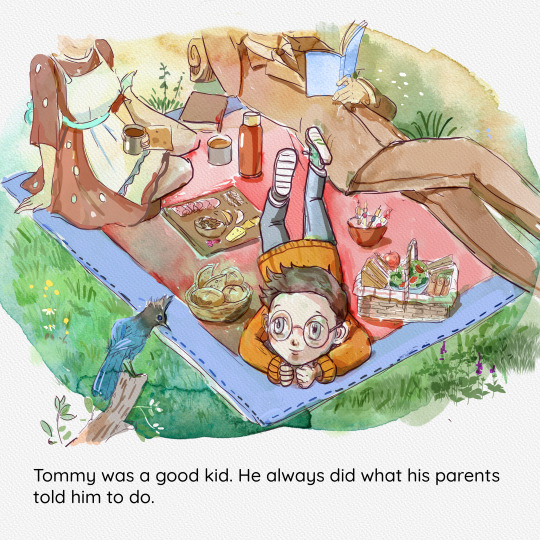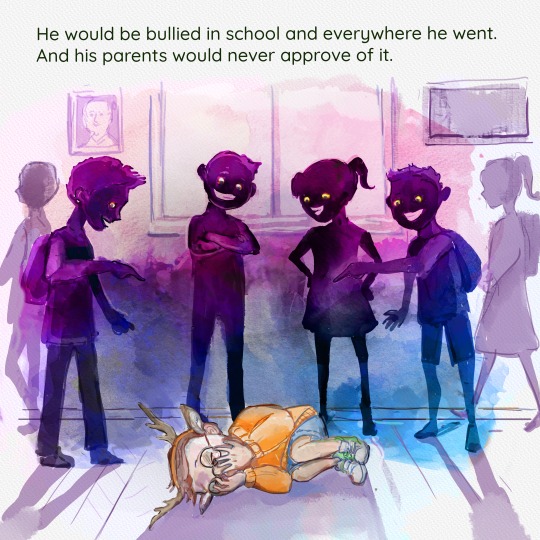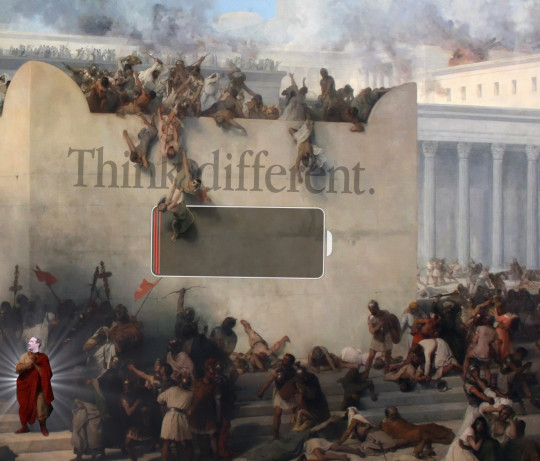#facebook ads and google ads jobs
Text

I spent the last 11 months working with my illustrator, Marta, to make the children's book of my dreams. We were able to get every detail just the way I wanted, and I'm very happy with the final result. She is the best person I have ever worked with, and I mean, just look at those colors!

I wanted to tell that story of anyone's who ever felt that they didn't belong anywhere. Whether you are a nerd, autistic, queer, trans, a furry, or some combination of the above, it makes for a sad and difficult life. This isn't just my story. This is our story.

I also want to say the month following the book's launch has been very stressful. I have never done this kind of book before, and I didn't know how to get the word out about it. I do have a small publishing business and a full-time job, so I figured let's put my some money into advertising this time. Indie writers will tell you great success stories they've had using Facebook ads, so I started a page and boosting my posts.
Within a first few days, I got a lot of likes and shares and even a few people who requested the book and left great reviews for me. There were also people memeing on how the boy turns into a delicious venison steak at the end of the book. It was all in good fun, though. It honestly made made laugh. Things were great, so I made more posts and increased spending.

But somehow, someway these new posts ended up on the wrong side of the platform. Soon, we saw claims of how the book was perpetuating mental illness, of how this book goes against all of basic biology and logic, and how the lgbtq agenda was corrupting our kids.

This brought out even more people to support the book, so I just let them at it and enjoyed my time reading comments after work. A few days later, then conversation moved from politics to encouraging bullying, accusing others of abusing children, and a competition to who could post the most cruel image. They were just comments, however, and after all, people were still supporting the book.



But then the trolls started organizing. Over night, I got hit with 3 one-star reviews on Amazon. My heart stopped. If your book ever falls below a certain rating, it can be removed, and blocked, and you can receive a strike on your publishing account. All that hard work was about to be deleted, and it was all my fault for posting it in the wrong place.


I panicked, pulled all my posts, and went into hiding, hoping things would die down. I reported the reviews and so did many others, but here's the thing you might have noticed across platforms like Google and Amazon. There are community guidelines that I referenced in my email, but unless people are doing something highly illegal, things are rarely ever taken down on these massive platforms. So those reviews are still there to this day. Once again, it's my fault, and I should have seen it coming.
Luckily, the harassment stopped, and the book is doing better now, at least in the US. The overall rating is still rickety in Europe, Canada, and Australia, so any reviews there help me out quite a lot.
I'm currently looking for a new home to post about the book and talk about everything that went into it. I also love to talk about all things books if you ever want to chat. Maybe I'll post a selfie one day, too. Otherwise, the book is still on Amazon, and the full story and illustrations are on YouTube as well if you want to read it for free.
#books#reading#childrens books#lgbtq#lgbtqia#autism#transgender#furry#therian#art#deer#queer#artists on tumblr#creativity#illustration
3K notes
·
View notes
Text
When Facebook came for your battery, feudal security failed

When George Hayward was working as a Facebook data-scientist, his bosses ordered him to run a “negative test,” updating Facebook Messenger to deliberately drain users’ batteries, in order to determine how power-hungry various parts of the apps were. Hayward refused, and Facebook fired him, and he sued:
https://nypost.com/2023/01/28/facebook-fires-worker-who-refused-to-do-negative-testing-awsuit/
If you’d like an essay-formatted version of this post to read or share, here’s a link to it on pluralistic.net, my surveillance-free, ad-free, tracker-free blog:
https://pluralistic.net/2023/02/05/battery-vampire/#drained
Hayward balked because he knew that among the 1.3 billion people who use Messenger, some would be placed in harm’s way if Facebook deliberately drained their batteries — physically stranded, unable to communicate with loved ones experiencing emergencies, or locked out of their identification, payment method, and all the other functions filled by mobile phones.
As Hayward told Kathianne Boniello at the New York Post, “Any data scientist worth his or her salt will know, ‘Don’t hurt people…’ I refused to do this test. It turns out if you tell your boss, ‘No, that’s illegal,’ it doesn’t go over very well.”
Negative testing is standard practice at Facebook, and Hayward was given a document called “How to run thoughtful negative tests” regarding which he said, “I have never seen a more horrible document in my career.”
We don’t know much else, because Hayward’s employment contract included a non-negotiable binding arbitration waiver, which means that he surrendered his right to seek legal redress from his former employer. Instead, his claim will be heard by an arbitrator — that is, a fake corporate judge who is paid by Facebook to decide if Facebook was wrong. Even if he finds in Hayward’s favor — something that arbitrators do far less frequently than real judges do — the judgment, and all the information that led up to it, will be confidential, meaning we won’t get to find out more:
https://pluralistic.net/2022/06/12/hot-coffee/#mcgeico
One significant element of this story is that the malicious code was inserted into Facebook’s app. Apps, we’re told, are more secure than real software. Under the “curated computing” model, you forfeit your right to decide what programs run on your devices, and the manufacturer keeps you safe. But in practice, apps are just software, only worse:
https://pluralistic.net/2022/06/23/peek-a-boo/#attack-helicopter-parenting
Apps are part what Bruce Schneier calls “feudal security.” In this model, we defend ourselves against the bandits who roam the internet by moving into a warlord’s fortress. So long as we do what the warlord tells us to do, his hired mercenaries will keep us safe from the bandits:
https://locusmag.com/2021/01/cory-doctorow-neofeudalism-and-the-digital-manor/
But in practice, the mercenaries aren’t all that good at their jobs. They let all kinds of badware into the fortress, like the “pig butchering” apps that snuck into the two major mobile app stores:
https://arstechnica.com/information-technology/2023/02/pig-butchering-scam-apps-sneak-into-apples-app-store-and-google-play/
It’s not merely that the app stores’ masters make mistakes — it’s that when they screw up, we have no recourse. You can’t switch to an app store that pays closer attention, or that lets you install low-level software that monitors and overrides the apps you download.
Indeed, Apple’s Developer Agreement bans apps that violate other services’ terms of service, and they’ve blocked apps like OG App that block Facebook’s surveillance and other enshittification measures, siding with Facebook against Apple device owners who assert the right to control how they interact with the company:
https://pluralistic.net/2022/12/10/e2e/#the-censors-pen
When a company insists that you must be rendered helpless as a condition of protecting you, it sets itself up for ghastly failures. Apple’s decision to prevent every one of its Chinese users from overriding its decisions led inevitably and foreseeably to the Chinese government ordering Apple to spy on those users:
https://pluralistic.net/2022/11/11/foreseeable-consequences/#airdropped
Apple isn’t shy about thwarting Facebook’s business plans, but Apple uses that power selectively — they blocked Facebook from spying on Iphone users (yay!) and Apple covertly spied on its customers in exactly the same way as Facebook, for exactly the same purpose, and lied about it:
https://pluralistic.net/2022/11/14/luxury-surveillance/#liar-liar
The ultimately, irresolvable problem of Feudal Security is that the warlord’s mercenaries will protect you against anyone — except the warlord who pays them. When Apple or Google or Facebook decides to attack its users, the company’s security experts will bend their efforts to preventing those users from defending themselves, turning the fortress into a prison:
https://pluralistic.net/2022/10/20/benevolent-dictators/#felony-contempt-of-business-model
Feudal security leaves us at the mercy of giant corporations — fallible and just as vulnerable to temptation as any of us. Both binding arbitration and feudal security assume that the benevolent dictator will always be benevolent, and never make a mistake. Time and again, these assumptions are proven to be nonsense.
Image:
Anthony Quintano (modified)
https://commons.wikimedia.org/wiki/File:Mark_Zuckerberg_F8_2018_Keynote_%2841118890174%29.jpg
CC BY 2.0:
https://creativecommons.org/licenses/by/2.0/deed.en
[Image ID: A painting depicting the Roman sacking of Jerusalem. The Roman leader's head has been replaced with Mark Zuckerberg's head. The wall has Apple's 'Think Different' wordmark and an Ios 'low battery' icon.]
Next week (Feb 8-17), I'll be in Australia, touring my book *Chokepoint Capitalism* with my co-author, Rebecca Giblin. We'll be in Brisbane on Feb 8, and then we're doing a remote event for NZ on Feb 9. Next is Melbourne, Sydney and Canberra. I hope to see you!
https://chokepointcapitalism.com/
#pluralistic#manorial security#feudal security#apple#mobile#apps#security through obscurity#binding arbitration#arbitration waivers#transparency#danegeld#surveillance lag
4K notes
·
View notes
Text
i've been thinking about this post




ever since i came across it because it bugs me so much ghjdfgd so many of the extensions listed there are redundant, either because they do each other's job or their functions have been implemented natively in firefox + the less extensions, the better! it's less surface area available for "attack"
i recommend the electronic frontier foundation's cover your tracks tool to check how well you're protected against web trackers (as for fingerprinting, i know brave combats canvas fingerprinting via filter lists - like firefox - and by randomizing a user's fingerprint, but it's a chromium browser. canvas blockers tend to impact usability. for day-to-day use you might just want to reduce data available to fingerprints, because to avoid that altogether i'm afraid you're better off using tor)
i'm going through the list above after the read more; i'm no expert, i've just spent a lot of my free time looking into how to improve my privacy and security habits and this is what my brain retained + don't believe me because i say so + feel free to point out any mistakes of mine.
🟩 keep
ublock origin. filter lists you should consider adding:
check Privacy > AdGuard URL Tracking Protection
add Actually Legitimate URL Shortener Tool (explained how here)
check out the arkenfox project's github page too!
🟨 optional
sponsorblock (1) & unhook (2) for yt. i personally don't use either because (1) i'm good with the good old dragging the current time indicator past sponsorship sections and (2) i'm also good at ignoring page elements i don't care about, but that's me obvs.
facebook container (& not listed above but multi-account containers too; differences between the two: x, x): total cookie protection (enabled by setting firefox's privacy protection to "strict") already partitions third parties, but these extensions could provide a further layer of isolation. container tabs + "Delete cookies and site data when Firefox is closed" + "Manage Exceptions" is excellent cookie management with no other extensions necessary
🟥 don't bother
total cookie protection makes ghostery, privacy badger & privacy possum redundant
you've got ublock origin so adblocker ultimate, ad nauseam & adblocker for youtube are also redundant. if you still see yt ads, remove all custom filters related to youtube on ublock origin and force update your lists
https-only mode has been introduced to all the main browsers so https everywhere is also redundant
trackmenot. it's unverified and indeed i've never seen it recommended in any of the multiple firefox hardening videos and guides i've checked, it's kinda useless unless you're a regular google or bing user. prefer a privacy-focused search engine instead
(e.g. duckduckgo [advanced search tricks here and here] which cleans up bing results and has a lite version too! i've also seen startpage [which cleans up google results] recommended but it's had some controversies. for further info, i recommend checking this)
duckduckgo privacy essentials. i suppose (but i can't be sure) this was installed because when you try to add a search engine in firefox's settings you're redirected to the addons page WHICH IS STUPID OF THEM because you can add them via search bar (i did this with e.g. letterboxd)
don't track me google. for those random google searches you still might need, if you added all the filter lists above to ublock origin you should be fine, and if you aren't you're better off using skip redirect
jury's out on blue blocker because it's unverified. i'm not a twitter user either so i haven't checked it out
#should actually update the masterlist in my resources blog too. laziness though........#i only set to go through that list so i haven't added much but bypass paywalls is also a godsend#.txt#resources
80 notes
·
View notes
Text
Big corporations should burn in the fire of the revolution
I'm fucking done this time. I'm furious, seriously.
I'm sick and tired of Google's and Facebook's and Amazon's sleezy corporate policies and poor platform management decisions.
What happened, I hear you ask? Well, I lost my goddamn phone.
And just like that I'm locked out of all of my important data and contacts, because of the fucking two-step verification bullshit they came up with. Most importantly, in the case of Google, I DISABLED THAT SHIT just two weeks ago.
I know my e-mail, I know my password, I even know my "secret secutity questions", which are apparently useless these days.
Still, I can't use anything, I almost missed a job interview because of this, I can't call my friend, who lives in Denmark, and I can't access half of the websites I often visit (including my Stripe account and YouTube channel), because they're all tied up with fucking Google.
Make no mistake about this is. This is not about our security.
The mere reason this 2-step assfuckery exists is to create a bridge between your computer and your phone so those corporate dipshits and sleazy marketing dickheads have your online identity complete. So they can show your more "relevant" ads.
That's right buddy, look at those beautifully AI generated toothpaste ads. Get that new gorgous tracking device, which probably cost the life of some poor kid in China. There you go. Accept all cookies. Goood boy. Now lick my fucking boots and balls and go back to your wage-slave job, while we come up with more ways to tighten the rope around your neck even more. I think we should come up with some new ways to lock you out of your bank accounts as well, what do you say? Oh, right. That already exists.
This is bullshit. We don't need you. YOU need us. You need us to be quiet, and docile, and engaged in some meaningless conflict, so you can smoke your fine cigars and take a nice, warm bath in our own tears.
And what WE need is just a little more boat rocking, just a little more eye poking, and I swear to God, - you're all gonna get what you asked for, delivered Ramsay Bolton style.
See you on the streets.
29 notes
·
View notes
Text
In 2017, Pratik Sinha and Mohammed Zubair cofounded the fact-checking website AltNews in India. Almost immediately, the pair were targeted with persistent and vicious attacks from the far-right news website OpIndia. Many of the attacks claimed that Zubair was a Rohingya Muslim who illegally migrated to India and that his cousin was a rapist. In several headlines, the site described Zubair as an “Islamist” spreading fake news.
This wasn’t far off from OpIndia’s other coverage: In addition to routinely attacking journalists and news sites critical of the government, OpIndia spreads conspiracies and, at times, outright disinformation, particularly about the country’s minority Muslim population. Founded in 2014, OpIndia is regularly name-checked by leading lawmakers in Prime Minister Narendra Modi’s Hindu-nationalist Bharatiya Janata Party (BJP), and the site admits it is funded in part by ads run by the BJP. As hundreds of millions of Indians vote in elections across the country, critics fear that OpIndia’s election-related disinformation and overt support of the Modi government could further undermine trust in the democratic process. Already, the website has echoed Modi’s widely criticized description of the Muslim vote as “vote jihad.”
Yet despite this, US tech companies, which have rules against hate speech and disinformation, continue to platform OpIndia and, in some cases, allow it to continue to make money through advertising. OpIndia has a robust presence on Facebook, Instagram, and X. Additionally, a new report, shared exclusively with WIRED, has found that Google’s ad platform is being used to partially fund OpIndia’s operation.
“In an increasingly polarized space, they create a vicious narrative against you,” Sinha tells WIRED. “All of this is narrative building. Their job is to defame anyone who's critical of the government, and that's what they do.”
Despite repeated efforts by activists to defund the site—and the fact that publications that have partnered with a Google-supported election fact-checking initiative, Shakti, have fact-checked OpIndia’s articles and found it routinely publishes fake news—OpIndia continues to operate thanks in part to ads that Google’s ad exchange platform places next to its content. In 2019, Poynter’s International Fact Checking Network, which accredits publications as trustworthy arbiters of information, rejected OpIndia’s application.
“Google’s own publisher policies prohibit the monetization of content that incites hatred, incitement of racism, promoting discrimination of an individual or group,” says Sarah Kay Wiley, director of policy and partnerships at Check My Ads, a nonprofit digital advertising watchdog organization and author of the new report. “Google also says that they don't monetize or work with publishers that make claims that are false and could significantly undermine trust in an election or democratic process.”
Ad exchanges allow publishers to sell ad space and advertisers to buy it through an entirely automated process that happens in the split seconds before a website loads. Ad sellers and buyers set limits for price and spending, with Google taking a cut of all transactions. Because of the automated nature of the process, advertisers likely don’t realize that their products are showing up next to hateful and misleading content.
Other ad exchanges such as Magnite have discontinued working with OpIndia. If Google were to stop working with OpIndia, says Wiley, that “would definitely have a material impact.”
On Facebook, OpIndia runs pages in English and Hindi, with 310,000 followers and 431,000 followers in each language, respectively. Both pages list their administrator as Aadhyaasi Media and Content Services Private Limited, which owns OpIndia.
On its Hindi page, OpIndia has shared stories promoting the “love jihad” conspiracy theory, which asserts that Muslim men are trying to marry, seduce, or kidnap Hindus in order to force them to convert and create a demographic shift in Hindu-majority India, and has promoted false claims, including that a new inheritance law would reallocate wealth from Hindus to Muslims. Meta spokesperson Erin McPike did not comment on whether this content violated Meta’s policies, nor on whether Meta takes into account the violations of the Hindi page when assessing the English page.
These narratives then get picked up and spread on other platforms, like X and Telegram, says Siddharth Venkataramakrishnan, an analyst with the Institute for Strategic Dialogue. “In some of these places there’s even more explicit calls for violence against Muslims or for the removal of Muslims,” he says. The site has international appeal as well: WIRED was able to find OpIndia articles shared in non-Indian, right-wing channels on Telegram, including a pro-Kremlin channel with over 1.3 million subscribers and numerous conspiracy channels with hundreds of thousands of followers.
The site is also highly active on the social media platform X with the official OpIndia account, which has 688,000 subscribers. OpIndia appears to pay for X Premium, giving it a blue checkmark, but did not respond to whether it subscribes to the service. WIRED has identified at least half a dozen OpIndia writers, columnists, and editors, including editor in chief Nupur Sharma, who has more than 680,000 followers, who appear to be subscribed to X Premium.
Sharma did not respond to a question about OpIndia monetizing its content via X Premium, and the company itself also failed to respond.
“It’s a hyper-partisan, right-wing outlet that set themselves up by saying that mainstream news media in India have a liberal bias, very similar to what American right-wing outlets say about professional journalism in America,” says Kalyani Chadha, an associate professor at the Medill School of Journalism at Northwestern University who published an in-depth report in 2020 on India’s right-wing media ecosystem that included OpIndia. “They bill themselves as a news outlet, but there's not a lot of original reporting. A lot of it is commentary and opinion.”
In addition to Sinha and Zubair, OpIndia has regularly targeted journalists and outlets it sees as “far left.” In one piece, the site’s staff listed the Indian journalists and publications supposedly associated with billionaire George Soros, who has long been the target of conspiracies from the global far right. In another, they attacked veteran journalist Ravish Kumar, falsely accusing him of harboring sympathies for the perpetrators of a 2019 rape case. OpIndia has also spent years attacking Raqib Hameed Naik, an Indian journalist and the founder of India Hate Lab, which documents instances of hate speech and conspiracies that target India’s minority communities. This, he says, was made all the harder by government officials sharing the articles.
“The goal is to amplify this disinformation, and you have BJP leaders sharing this, so people think it’s authentic,” says Naik. “In the long term, this kind of builds the case against a critic, a journalist, that this person is bad, because there is reporting against them.”
When WIRED contacted OpIndia for comment, Sharma responded to our emailed questions by posting her responses on X.
When asked about hate speech and disinformation on her site, Sharma wrote: “Our critics are mostly Islamists, Jihadis, Terrorists, Leftists and their sympathizers—like yourself. We don't particularly care about any of them.” She then added that “Islamophobia does not exist” and pointed to an OpIndia article that outlines her position. Sharma added that it was “none of your concern” when asked if OpIndia was funded by the BJP. Sharma’s post also tagged one of the authors of this story, who then faced a torrent of abuse from Sharma’s followers.
For years, activists and researchers have tried to highlight the problematic content published by OpIndia. A 2020 campaign from UK-based advocacy group Stop Funding Hate led to a number of advertisers removing their ads from the site. Google, however, says the content published on the site does not appear to breach its own rules.
"All sites in our network, including Opindia, must adhere to our publisher policies, which explicitly prohibit ads from appearing alongside content promoting hate speech, violence, or demonstrably false claims that could undermine trust or participation in an election,” Google spokesperson Michael Aciman says. “Publishers are also subject to regular reviews, and we actively block or remove ads from any violating content."
Despite this, users can find ads for Temu or the Palm Beach Post next to many OpIndia articles promoting conspiracies and Islamophobia, placed with the help of ad-exchange platforms like Google’s Ad Manager, which is the market leader.
Facebook, meanwhile, says Wiley, is more of a “walled garden.” Once a publisher meets the company’s criteria for monetization, including having more than 1,000 followers, it can earn money from ads that run on the page.
While researchers that spoke to WIRED were unable to tell exactly how much the site has made from Google Ads and Facebook monetization, they said it’s likely that OpIndia is not solely reliant on the ad exchange for its revenue. It appears that, as with many news outlets in India, part of that funding comes in the form of more traditional advertising from a major client: the government.
“A large section of India's mainstream press depends on the government ads for their survival,” says Prashanth Bhat, professor of media studies at the University of Houston. “That revenue is critical for the mainstream media survival in a hypercompetitive media environment like in India. We have about 400 round-the-clock television news channels in India in different languages, and we have over 10,000 registered newspapers. For them to survive, they definitely need government patronage.”
Sharma confirmed that OpIndia is reliant in part on ads from the government. “Literally every media house gets advertising from various political parties,” said Sharma. “In fact, a part of your salary could also be funded by such parties and/or their sympathizers. Do get down from your high horse.”
The BJP has, however, also sought to help OpIndia in other ways. In 2019, the BJP reached out to Meta directly, asking the company to allow OpIndia to monetize on Facebook. Meta spokesperson McPike told WIRED that OpIndia’s English page is still able to monetize but that monetization on its Hindi page is currently not allowed “due to violations of our policies.”
“In order to monetize on Facebook, Pages must comply with our community standards, our partner monetization policies, and our content monetization policies,” McPike says.
Google did not respond to questions from WIRED about whether it had ever received a similar request from the Indian government. Google’s Aciman says, “As we do with all publishers, we’ve taken prior page-level enforcement action on this site when we’ve found policy violations. We will of course continue to enforce our policies on violating content across our publisher network.”
X did not respond to questions about whether OpIndia and its staff are able to monetize through X Premium or whether the company has ever received requests from the government to restore content from OpIndia or its staff. The company has complied with several takedown requests from the Indian government to ban accounts or tweets critical of the government.
But Wiley says that without transparency on the part of tech companies as to how they’re deciding which organizations are able to earn money through ads—and how much—outlets like OpIndia will continue to fall through the cracks.
“The business model of the internet at the end of the day is advertising, and what we're seeing over and over again is, that business model is broken,” she says. “Advertisers don't know where their money is going. And the biggest issue is that a lot of that is being funneled to mis- and disinformation online.”
7 notes
·
View notes
Text
🪐 Ringed planet emoji review 🪐
(I’m not a scientist, I just like Saturn)

Apple: So here we have Apple’s take on a ringed planet which resembles saturn because of the hexagon. it’s tilted a little wrong. You can see the details on it’s surface and the ring is nicely distributed. 9/10 Strong.

Google: The tilt on this one is more accurate. It looks simplistic, which works fine. I see the hexagon. The color of the rings shouldn’t be that blue. 7/10 Reminds me of my first Saturn drawing.

Samsung: Again, the tilt is pleasant. it’s decently shaded. It needs more coloring as the color scheme is very repetitive and boring. The rings don’t look separated enough for me, even though I like their aesthetic. No hexagon. Pixelated 6/10 Because it’s not as bad.

Microsoft: I can see they wanted to make an adapted simple version of Saturn, which is a nice idea. The execution looks too off. Can you add more rings please? Random colors on the surface. Bad tilt. 1/10 You can see me after work.

WhatsApp: now, that’s a good ring! I love the surface although the tilt should be different. It looks shiny, like a marble. 9/10 You did a good job.

Twitter: Yikes. I can be the only one who thinks this could smell like cheese. Too saturated for my tastes. The rings are lazily done. 2/10 Ok tilt though.

Facebook: Tries too hard to make it super detailed that it looks harsh. The surface is pretty. Doesn’t look much like Saturn, but it looks nice. The rings could be more separated. The tilt is good. 7.5/10 Could be an exoplanet similar to Saturn.

Skype: See? Another simple Saturn like Twitter and Microsoft. Please. Change. The. Colors. 3/10 Good tilt and ring though.

Twitter emoji stickers: It reminds me of blender renders. I like the rings and how 3d it looks. The shading and details are good and the surface is nicely done. It reminds me of my current Saturn drawing. Off tilt. 8/10 I like the shadows

Joypixels: Cutest colors. The tilt is a little off. The rings are distributed nicely and is that the hexagon? I think it could be a good idea to erase the grey space between the rings. 7/10 doesn’t look that bad actually

TossFace: You just drew a purple circle and added a lilac ring. Do better. 0/10 sorry, but no.

PS5-4: This could look decent if not too pixelated. It’s a little sad. 3/10 the tilt looks nice but please fix the graphics.

Openmoji: Actually, the cell shading makes the colors pop. Doesn’t look like Saturn though. 2/10 Adding a red ball won’t make this emoji a masterpiece.

Emojipedia: I love how realistic the surface looks. I think the main purpose of this emoji is to make it classy and elegant. The planet itself lacks an hexagon though. It’s got a lot of rings, which is a nice idea but they are too close. I like the shading. I don’t mind the tilt in this one. 8/10 I see you tried.

LG: It looks more like Jupiter than Saturn. The rings are good but it’s a better idea to make the surface different. 5/10 Pitty points.
Thank you!
Saturn is so aesthetic 🪐
#Emojireview#emoji#emojireviews#emojiratings#emojirating#Saturn#space#science#planets#aesthetic#tumblr fyp#emojis#ringedplanet
37 notes
·
View notes
Text
Munkatarsam: google display, paid search es youtube felelos. Egy platformot hasznal: google. Setup: o megmondja az ugynoksegnek, mit csinaljanak.
Ugyanaz a job title mint en
En: linkedin, facebook, twitter, xing, content publishing and syndication (3 publishers), abm display (demandbase, rollworks), programmatic ads (invibes, inskin, cdn, plus one test/Q), online ads (wsj, wired) es ad-hoc digital ad management. Ket ugynokseg + direct ad management (50-50%).
Nagyon remelem hogy a fizetesem minimum a ketszerese az ovenek.
19 notes
·
View notes
Text
The U.S. Wants to Ban TikTok for the Sins of Every Social Media Company
On Wednesday, the House of Representatives will likely vote to force ByteDance to divest from TikTok, which sets the stage for a possible full ban of the platform in the United States (Update: it did). The move will come after a slow but steady drumbeat from politicians on both sides of the aisle to ban the platform for some combination of potential and real societal harms algorithmically inflicted upon American teens by a Chinese-owned company.
The situation is an untenable mess. A TikTok ban will have the effect of further entrenching and empowering gigantic, monopolistic American social media companies that have nearly all of the same problems that TikTok does. A ban would highlight, again, that people who use mainstream social media platforms run by corporations do not actually own their followers or their audiences, and that any businesses/jobs/livelihoods created on these platforms can be stripped away at any moment by the platforms or, in this case, by the United States government.
Bytedance and TikTok itself have been put into an essentially impossible situation that is perhaps most exemplified in a 60 Minutes clip from 2022 that went viral this weekend, in which Tristan Harris, a big tech whistleblower who has turned the attention he got from the documentary The Social Dilemma into a self-serving career as a guy who talks about how social media is bad, explains that China is exporting the “opium” version of TikTok to American children.
In [the Chinese] version of TikTok, if you’re under 14 years old, they show you science experiments you can do at home, museum exhibits, patriotism videos, and educational videos,” Harris said. “And they also limit it to only 40 minutes per day. They don’t ship that version of TikTok to the rest of the world. So it’s almost like they recognize TikTok is influencing kids’ development, and they make their domestic version a spinach version of TikTok, while they ship the opium version to the rest of the world.” FCC Commissioner Brendan Carr quote tweeted this and said “In America, TikTok pushes videos to kids that promote self-harm, eating disorders, and suicide.”
Put simply: Every social media platform pushes awful shit to users of all ages. This is not a defense of TikTok, but a simple fact that has made up a huge portion of tech reporting for the last decade. Mere weeks ago, the New York Times published an exposé on underage girls being pushed into “child influencing,” a world which is full of pedophiles. Instagram’s effects on teens has been widely documented by Meta’s own employees, and without really trying we have been able to document the sale of guns and drugs, hacking services, and counterfeit services in ads displayed on the platform. Discord is full of communities used for organizing by Neo Nazis and paramilitaries, criminal hackers, crypto scammers, deepfake peddlers, teens who kidnap each other, etc. Facebook is full of AI-generated bullshit that people think is real, was used by foreign adversaries to attempt to influence an election, was credibly accused of being abused to facilitate a genocide in Myanmar, and has had innumerable scandals over the years. Twitter is full of malware and has essentially gotten rid of all of its rules. YouTube is a place that has been used by ISIS terrorists, white supremacists, mass shooters, and child brainwashers. Telegram was founded by Russians, is now based in the United Arab Emirates, and is full of criminals, hackers, and Russian disinformation. We have reported endlessly that all of these platforms are monitored by governments, militaries, surveillance agencies, and commercial interests around the world using "social listening," "social media monitoring," and OSINT tools.
Meta, Google, and Twitter have all moved resources away from content moderation in recent years, and have laid off huge numbers of employees as Republicans have cried “social media censorship.” As Elon Musk’s Twitter has become more of a cesspool in the absence of good content moderation, Google and Meta have realized that they can keep advertisers as long as their platforms are ever so slightly less toxic than Twitter. I am unaware of any political pushes to ban Instagram, Facebook, YouTube, or Twitter, and efforts to meaningfully regulate them to be less harmful seemingly have no political will. The only actual regulation of these platforms have been laws passed by conservatives in Florida and Texas which give them even less ability to moderate their platforms and which is the subject of a Supreme Court case.
This is just to say that TikTok and the specter of China’s control of it has become a blank canvas for which anyone who has any complaint about social media to paint their argument on, and has become a punching bag receiving scrutiny we should also be applying to every other social media giant.
When Uber, Airbnb, DoorDash and Bird ignore local laws or face the specter of bans or regulation, they use push notifications, email, and popups within their apps asking customers to complain to legislators. When these American apps do this, they are simply leveraging their popularity to “mobilize users.” When TikTok does the same, it is Chinese interference in American politics. When American TikTok users use their platform to share their progressive or leftist politics and TikTok’s algorithms allow them to go viral, that’s Chinese interference. When TikTok deletes content that violates its terms of service, that’s Chinese censorship. When Facebook and Google allow advertisers to create psychographic, biographic, and behavioral-based profiles of their users to target ads to them, that’s “personalized advertising.” When TikTok does ads, it’s Chinese spying. When TikTok users see content that promotes suicide, eating disorders, and makes people feel bad about themselves, it’s China brainwashing our children, undermining America, and threatening our existence. When Facebook, Instagram, and YouTube users see the same, it’s inconvenient and unfortunate, but can be solved with a blasé spokesperson statement that these platforms care about safety and will strive to do better.
In the clip above, Harris explains that polls show American children want to be “social media influencers” and that Chinese children want to be “astronauts,” the subtext being that it is like this because bad stuff is not allowed on Douyin, the Chinese version of TikTok. Banning TikTok is not going to change this (and Harris does not mention that China has tons of social media influencers as well). Harris says this with some derision, the subtext being that we should not want our children to grow up to be social media influencers.
This should not need to be explained, but because Harris and 60 Minutes did not explain it: Douyin (the Chinese version of TikTok) is not actually a sterile place that consists only of people doing science experiments and math equations, just as TikTok and all social media in America is not only an unmitigated shithole devoid of intellectual value. But Harris has this idea of Douyin being a safe place for kids because China does not have a free internet. The internet is widely and famously censored by the Chinese government, and ByteDance is complying with Chinese law in China. It is possible to argue (though I would not), that this makes the internet “safer,” and it is possible to argue (though I would not) that a “safer” internet is “better.” If Harris wants Chinese-style censorship of the internet in the United States, then he should argue for that. But in the United States, we have the First Amendment and a host of other regulations that have fostered something resembling an open internet. That open internet allowed for the rise of Facebook, Twitter, Instagram, and YouTube.
This general principle of not censoring the global internet also allowed for the rise of TikTok, which has millions of users in the United States because people like using it. TikTok is not perfect—in fact, I believe lots of the things on TikTok are very bad. Despite what I have just written, I understand that Chinese interference via algorithmic warfare or spying or any other tactic is a possible threat. China has been accused of using accounts on TikTok to spread influence, in the exact same way as the U.S. government has been caught spreading pro-U.S. influence abroad on Facebook and Twitter.
Like I mentioned, I think that this entire situation is actually very complicated, and is in fact a huge mess. I can understand why some people want to ban TikTok, but I am not sure how the government can do so without violating the free speech rights of millions of Americans and setting us on a path where a relatively open, global internet becomes one that is increasingly geographically siloed. I don’t think we should ban a platform because it competed too hard and became popular, especially when the direct beneficiaries of a ban are companies that are doing most of the same apparent algorithmic poisoning of America, just from within America’s borders. I also do not think it is constitutional, ethical, or good for the government to decide to unilaterally cut millions of Americans off from one of the largest social media platforms in the world and to effectively force its users and more importantly the people who make a living on TikTok to use a balkanized internet dominated by American megacorporations.
9 notes
·
View notes
Text
I Will Do Your Social Media Manager And Digital Marketing Manager..
Hello there, I will be your social media manager. I can help you to promote your products, Business and personal Website to millions of active people .
I am Digital Marketer and SEO Professional. I have huge skills and Experience Facebook Marketing, Link Building, Leads Generation etc. Youtube Marketing, Google top ranking. Also i am Expert In Graphic Design, Video Editing and Artical Writing. I have Completed a long cowrse from outsourcing institute by Jamal sir. Learn all the job Very Carefully and perfectly. I Can promote any Company to woridwide or a targetet location. Able to reach millions of people by SEO my work. I am ready to take bug responsibility and I like to take responsibility .
I work fore my clients with my full skil
This Offer includes!
Social Media Management
SEO
Keyword research
Social media promotion
Marketing strategy plan for business
Eye-catching banner designing
Content writing
Post scheduling
Facebook and instagram ads campaign
Advertising
Instagram and youtube marketing
Hashtag research
Facebook business
#Facebookmarketing, #instagrammarketing, , #seo #seoexpert #seospecialist #seofreelancer #seomarketing #seoconsultant #seo2024 #seoservice #DigitalIndia #DigitalMarketing
#digitalmarketing
#facebookadsonreels
#digital marketing#home & lifestyle#logo design#graphic design#male model#amazon#freelance#books#california#facebook ads
2 notes
·
View notes
Text
I am good at my job, I’m enjoying getting making my shop my own and seeing it get better and better. But fuck me do I regret coming here. Rural Iceland fucking sucks in general, and even by Westfjords standards Bolungarvík is horrendous. Cultural wasteland of a town populated primarily by nasty old bigots. It would be halfway bearable if I was getting paid enough for this shit but I’m not, and my rent is high and I’m undercharging my roommate, so I don’t even have enough financial wiggle room to get regularly shitfaced to take the edge off. At least in Grundó I could get a second job, and most people were decent, and there was stuff happening.
Realistically I gotta stick this shit out for another 6 months cause I feel like I need to put a full year in here to be able to apply for other shops elsewhere without it being an issue, but honestly I don’t think I’ve got 6 more months of this town left in me. I posted a job ad on Facebook, in English cause a) I can’t be fucked trying to make google translate spit out something coherent and b) it’s only ever teens and immigrants who apply for part time shop work anyway. And now I’ve got all the local old Iceland For Icelanders hags leaving shitey comments. And I have to serve them with a smile tomorrow.
9 notes
·
View notes
Text
Charting Your Course: A Roadmap to Success in Digital Marketing Careers
Introduction: Embracing the Digital Revolution
In today's digital era, the marketing landscape has undergone a seismic shift, with digital marketing emerging as the driving force behind business growth and success. This guide offers a comprehensive roadmap for individuals aspiring to embark on a fulfilling career journey in digital marketing, delving into the essential steps and strategies required to carve out a successful path in this dynamic field.

Understanding the Foundations of Digital Marketing
Digital marketing encompasses a diverse range of online strategies and techniques aimed at promoting products, services, or brands to targeted audiences. From search engine optimization (SEO) to social media marketing, content creation, email campaigns, and beyond, digital marketing leverages the internet's power to engage and connect with potential customers.
Step 1: Acquire Knowledge and Skills
Kickstart your digital marketing career journey by equipping yourself with the essential knowledge and skills required in the field. Explore online resources, such as blogs, articles, and tutorials, to familiarize yourself with fundamental digital marketing concepts. Additionally, consider enrolling in reputable online courses or certification programs offered by platforms like Coursera, Udemy, or HubSpot Academy to gain a comprehensive understanding of digital marketing strategies and techniques.
Step 2: Establish a Strong Online Presence
Demonstrate your expertise and passion for digital marketing by establishing a robust online presence. Create a professional website or blog where you can share valuable insights and industry-related content. Utilize social media platforms like LinkedIn, Twitter, and Facebook to connect with industry professionals and engage with relevant communities. Your online presence serves as a digital portfolio, showcasing your skills and expertise to potential employers or clients.
Step 3: Gain Practical Experience
Hands-on experience is invaluable in the field of digital marketing. Seek out internship opportunities, volunteer projects, or entry-level positions that allow you to apply your knowledge in real-world scenarios. Whether it's managing social media accounts, optimizing website content, or running email marketing campaigns, practical experience will help you develop and refine your skills while building a strong foundation for your career.
Step 4: Stay Abreast of Industry Trends
Digital marketing is a rapidly evolving field, with new technologies and trends emerging regularly. Stay updated with the latest industry developments by following influential blogs, subscribing to newsletters, and attending webinars and conferences. Remaining informed and adaptable will enable you to stay ahead of the curve and capitalize on emerging opportunities in the digital marketing landscape.
Step 5: Obtain Industry Certifications
Enhance your credibility and validate your expertise by obtaining certifications from reputable organizations or platforms. Consider pursuing certifications in areas such as Google Analytics, Google Ads, HubSpot Inbound Marketing, or Facebook Blueprint. These certifications not only bolster your resume but also demonstrate your proficiency in specific digital marketing disciplines, making you a more competitive candidate in the job market.

Step 6: Network and Foster Relationships
Networking is essential for advancing your digital marketing career. Attend industry events, join professional associations, and connect with other digital marketers on social media platforms. Building relationships with industry professionals, mentors, and peers can provide valuable insights, guidance, and career opportunities as you progress in your digital marketing journey.
Step 7: Specialize and Define Your Niche
Identify your strengths, interests, and passions within the digital marketing landscape and specialize in specific areas or disciplines. Whether it's SEO, social media marketing, content creation, or paid advertising, finding your niche allows you to focus your efforts and differentiate yourself in the competitive job market. Develop specialized skills and knowledge in your chosen area to become an expert in your field.
Step 8: Seek Mentorship and Guidance
Seek out experienced professionals who can offer mentorship and guidance as you navigate your digital marketing career. A mentor can provide valuable insights, advice, and support, helping you overcome challenges and achieve your career goals. Leveraging mentorship opportunities can accelerate your professional growth and development in the digital marketing field.
Step 9: Maintain Persistence and Proactivity
Success in digital marketing requires persistence, dedication, and a proactive approach. Stay motivated and resilient in the face of challenges, and continuously seek out opportunities for learning and growth. By remaining proactive and persistent in your pursuit of excellence, you'll be well-positioned to achieve success and fulfillment in your digital marketing career.
In conclusion, starting a career in digital marketing is an exciting and rewarding endeavor that offers abundant opportunities for growth and success. By following the steps outlined in this guide, you can lay the groundwork for a thriving career in digital marketing, equipped with the knowledge, skills, and confidence to navigate the dynamic and ever-evolving landscape of digital marketing successfully. Whether you're a recent graduate, career changer, or seasoned professional, the path to a fulfilling career in digital marketing awaits you.
#tech#training#digital marketing#digital marketing company#digital marketing course#online marketing#email marketing#search engine optimization#seo
2 notes
·
View notes
Text
The Paramedic (part 3)
Eddie Munson x (Male) reader
(Part 1) (Part 2)
Summary: An alternate ending to the season 4 finale ,where an ambulance paramedic reader from 2022 stumbles upon Eddie in the upside down right after the bat attack.
Word count: 1431
CW: Blood, death, medical descriptions, angst, (Y/N)
An: I'm on a roll, here is chapter 3 guys!!🤘🦇
Chapter 3
You are awoken by your alarm, at first you just lay in bed enjoying the rays of sun peeking through the blinds. Eventually you get out of bed, stretching your awfully sore body. You look down expecting to see your bare torso and pyjama bottoms and freeze. You are still wearing your uniform and it is covered in dried blood and mud. That is when all the memories of the events from the yesterday flood inn. The weird portal, the monsters and Eddie.
You feel a sense of dread wash over you, the same feeling you got the day before when you left the surgery.
The only thing you wanted to do now was find Eddie and hopefully get some answers. You could try visiting him in the hospital, if he wanted to or was well enough to see you. They might not let you see him though, as you are not a family member. How will you get a hold of him then? Shit, maybe he has a phone?
Instantly you run over to start your laptop and open up your web browser, writing “Eddie Munson” into google. You expect to see a link to his Facebook or Instagram account but what you see startle you. News and true crime articles with titles like “Serial killer Cult leader murders 3 teenagers” and “The D&D cult killer” pop up.
You feel yourself start to sweat, wondering if you had been helping a serial killer all along. Not that you wouldn’t still save Eddies life even if he was. It is not your job to judge; you are supposed to help anyone without bias, but you might not have gotten so attached if you knew. Wait attached? You barely know the man, this situation must be messing with your head.
Eddie did seem like a nice person thought, not threatening at all. Maybe that’s just how you remember him due to the circumstance of your meeting? Maybe he is one of those innocent seeming killers who lull you into a false sense of security before striking? The more you thought about it, none of this seemed right to you.
As you click in on several of the articles something grabs your attention, you see what looks like a yearbook photo of Eddie Munson, from...1986. He looks just like the Eddie you saved yesterday, fuck IT IS the Eddie you saved yesterday! Same name, same face, same hair, same country and fuck didn’t he tell you he played D&D? If that is Eddie shouldn’t he be what, 60 by now? Fuck you can’t even begin to imagine what is going on.
“Time travel…fuuck me. No, nope” you shake your head, things were crazy enough with the serial killer, portal and hellscape business, time travel just added another layer of FUCKED you were not prepared for.
You continue reading and notice a particularly interesting passage “Eddie Munson went missing after his alleged killing spree in 1986, to this day he is still missing (presumed to be dead)”. That must be when he disappeared to that hell scape? Or maybe he had gone there on purpose? If he disappeared before the killings, then it cant be him who killed those teenager can it? He could be innocent.
Your train of thought is interrupted by your phone ringing. You pick it up, see that it is from an unknown caller and answer hesitantly.
“Hello?”
“Hello. Is this Y/N L/N?” a male voice asks
“Yes, that’s me”
“We have a patient here, Eddie Munson, It says here that you are his emergency contact. We are calling you to notify that he is at Rikshospitalet. You can come and visit him in the visiting hours, from 09.30 to 12.00”
“Oh, ok. Thank you for telling me”
“Have a great day, bye”
“Bye”
He put you as his emergency contact? Given the whole situation it would make sense for him to do so, you are probably the only person here that he knows. Still, it surprised you, you had not expected it.
You want to go immediately, take the first buss to the hospital, but then you get a good look at yourself in the mirror. You look awful, no, before you leave you are going to need a shower, a change of clothes, breakfast and a strong cup of (tea/coffee/energy drink).
--------A breakfast, shower and buss trip later--------
You arrive at the hospital 09.50. At this time, it is crowded with people by the reception, you end up standing in line for quite a while. When you finally get to talk to the receptionist, she tells you that Eddie is on the second floor in room 267.
The closer you get to room 267, the more nervous you become. What if he knows just as little as you? What if he is in fact a serial killer from 1986? The questions keep running through your mind and before you know it you are standing outside room 267.
You hesitate for a second, before you walk in.
Inside the room you see Eddie laying in his bed wearing a blue hospital gown, he has not noticed you entering and is looking out the hospital window biting his nails, his long messy hair framing his frowning face. He looks so frail, with dark rings under his eyes and his skin pale. You had prepared all these questions to bombard him with, but now you don’t really want too anymore. This guy does not look like a serial killer, he doesn’t look like he has a mean bone in his body.
“Eh, hi?” you say awkwardly, walking up to him
When Eddie sees you, he lights up a bit. “You came!”
“Yeah, how.. how are you feeling?”
“If I am being completely honest, like shit. But I guess that’s what you get for playing hero~” the last part he almost whispers to himself.
“Is it ok if I sit down?” you ask pointing towards a chair.
“Oh yeah dude, go ahead”
You take the chair and pull it up to the left side of Eddies bed, sitting down heavily.
“So… you put me as your emergency contact?”
Eddie looks away from you with an awkward smile “Yeeha, I was hoping to get to talk to you. You saw the whole up side down place, you know when you saved my life an all” as he continues to talk his body seems to get more and more animated “So, I thought; this guy is the only person that wouldn’t immediately throw me in the looney bin if I tried explaining myself… and hopefully maybe... you could help me out?”
You open your mouth to answer, but before you manage to utter a word he rambles on.
“You don’t need to help me off course, you already swooped in and literally picked me up like a fucking princess, saving my life. But… I’m…I don’t know what to do”. Eddie looks down at his hands, not daring to see your expression.
You can’t help but feel sorry for him, if you were in his shoes, you are not sure what you would do either.
“I’ll help you”
At this Eddie looks up at you.
“But, before I do. I need some answers, because I don’t know what the fuck is going on”
“Yeah, that’s fair. Ask away man.”
“I’m not so sure where to start…but uh, that upside down place you mentioned. Is that what the place I found you is called?”
“Yes”
“What is it?”
“I am no expert, but it was explained to me as some sort of dark mirrored version of our world. Sometimes portals open between our worlds and you can travel through”.
“When I went through the portal it was through a forest, but I came out in a small town… that does not seem very mirrored”.
“Yeah, you are supposed to enter a place similar to the one you came from, so I have no idea why it traveled me from America in 1986 to Norway in… whatever time it is now, because it sure as hell aint 1986”.
“We are in 2022”
Eddies starts at you in utter disbelief “ 2022?? WHAT?? That’s what 50 years in the future?” he almost screams
“36 actually”
“How are you so calm about this?”
“I googled your name and uuh.. I found some crazy shit”.
“Googeld?” Eddie looks at you confused
“Oh right” if he is from 1986 he wouldn’t know about the internet “I uh found some information about you… from 1986”.
Eddie freezes, his hands clenching into fists “what kind of information”
“That you were a suspected serial killer and that you disappeared in 1986”.
67 notes
·
View notes
Text

Marvel's Secret Invasion used AI-generated images to create its opening credits, which is why we're revisiting this blog from June 8th. Because, if a human didn't create the credits, does that mean Marvel can't claim copyright? Read the blog to learn about AI and the interesting legal questions it's raising 🤖
Artificial intelligence (AI) is the hot topic in every industry, as experts and commentators speculate how this rapidly evolving technology will change the future of work; and humanity.
However the water cooler exists at your job – maybe you’re playing it retro and still have an actual water cooler in your physical office – people are gathering around it to ask if you’ve tried ChatGPT yet, if AI will result in a shorter work week, or if the robots are coming for us Skynet-style. While there is nothing to suggest artificial intelligence has become sentient, the line between reality and science fiction is blurring.
Where does this leave people working in industries like video production? Will AI replace us, or will it become another tool in our utility belts?
This Just In
News headlines surrounding artificial intelligence are constantly fluctuating, and the biggest topics of conversation can be forgotten only a week later once something new eclipses it.
AI is progressing so rapidly, it’s hard for experts to say with any degree of certainty where it may take us, but that doesn’t stop everyone having an opinion on what will happen next. At the time of writing in June 2023, here is an overview of the leading artificial intelligence headlines:
Sam Altman, creator of ChatGPT, says AI poses an “existential risk” to humanity.
The United Kingdom will host the first global summit on artificial intelligence safety (date TBA).
The Beatles are back, as AI creates brand new songs from the Fab Four.
The European Union (EU) asks social media companies, including Google and Facebook, to label AI-generated content.
The latest AI trend is to expand famous paintings, creating more content but no art.
Read this article again in July and half of this will be old news. Or a reunited Beatles, half of whom are back from the grave, will become an acceptable reality. Really, it’s anyone’s guess.
Are You Sure That’s Legal?
Artificial intelligence is not entirely new in video production. AI has been used already for image manipulation and content editing. As the power of AI grows, however, it comes with the potential to create imagery from vast datasets. Seemingly making something from scratch, like a human would.

In May 2023, Adobe added an AI-powered image generator called Adobe Firefly to Photoshop. The software is promised to turn your wildest dream into an amazing image in seconds, but how is this image made? Rival software, such as Stability AI, have already faced legal action over the creation of their images. Groups like Getty Images claim Stability’s artificial intelligence generates content using existing images, or combining multiple images from the dataset its creator uploaded, which infringes their copyright.
Individuals using AI for personal use have a lot more legal freedoms than companies using AI to create images and videos for commercial use. Companies have to consider the copyright of the matter, and this is a huge ongoing debate that could take years to resolve.
As noted in the Berne Convention, an international treaty on copyright, copyright protection operates “for the benefit of the author and [their] successors in title” – the assumption being that there is a human creator. This has been affirmed in the US in the now famous “monkey selfie” dispute, during which both the Copyright Office and the courts found that animals could not hold copyright.
The absence of a human creator in respect of AI-generated content therefore presents obstacles to the subsistence of copyright in the output that is generated.
INFORMATION AGE, JUNE 2023
If a company uses AI to create a video, do they have ownership of it? Could the company face legal penalties if the AI is found to have used existing images and the artists’ sue, or is that a risk for the AI creator? Will users want to watch AI created content when there is such a big debate surrounding art and humanity; remember, the EU is campaigning for social media channels to put a label on AI content.
The simple answer is, we don’t know.
youtube
That’s a lot of potential legal issues and, because AI is evolving rapidly, there’s no clear answers. The earliest cases of these disputes are still ongoing, which means there’s little legal precedent to inform companies who are assessing how AI can help them with content creation.
Working with a video production company removes the uncertainty. Video production companies, like Squideo, give clients full ownership of the video once it’s created – meaning the video can be shared as widely as the company wants and, if it is replicated, the company can claim copyright.
Yet this doesn’t mean artificial intelligence has no place in the video production process whatsoever.
Judgement Day?
In 2023, 91% of businesses plan to use video as a marketing tool and 96% rate video as an ‘important part’ of their marketing strategy. There is growing demand for short videos, perfect for sharing to reels and stories on social media. Implementing AI in the video production process can speed things up and lower the cost.

ChatGPT can accelerate the scriptwriting process by providing a foundation to build upon – though it’s best not to rely entirely on AI writing generators just yet, as it’s still making a variety of mistakes. Voiceovers can be supplied by AI instead of recording artists too, as the technology has made artificial voices significantly more life-like. Although they’re less directable than voiceover artist, and not necessarily cheaper.
Video production companies like Squideo create your animated video from scratch, ensuring complete one-of-a-kindness. That doesn’t mean we can’t benefit from AI tools – but we’re not about to become obsolete either.
Ready to create a unique video of your own? Watch the video below to get a better understanding of how Squideo can help promote your business, then get in touch with us to find out more!
youtube
#marvel cinematic universe#marvel secret invasion#secret invasion#artificial intelligence#artificial intelligence artwork#ai#ai generated#ai image#ai art debate#ai artwork#ai legal#youtube#legal eagle#2d animation#animation#marketing strategy#small business#small business on tumblr#marketing#advertising#blog#Youtube
9 notes
·
View notes
Text
In today’s digital world, injustice lurks in the shadows of the Facebook post that’s delivered to certain groups of people at the exclusion of others, the hidden algorithm used to profile candidates during job interviews, and the risk-assessment algorithms used for criminal sentencing and welfare fraud detention. As algorithmic systems are integrated into every aspect of society, regulatory mechanisms struggle to keep up.
Over the past decade, researchers and journalists have found ways to unveil and scrutinize these discriminatory systems, developing their own data collection tools. As the internet has moved from browsers to mobile apps, however, this crucial transparency is quickly disappearing.
Third-party analysis of digital systems has largely been made possible by two seemingly banal tools that are commonly used to inspect what’s happening on a webpage: browser add-ons and browser developer tools.
Browser add-ons are small programs that can be installed directly onto a web browser, allowing users to augment how they interact with a given website. While add-ons are commonly used to operate tools like password managers and ad-blockers, they are also incredibly useful for enabling people to collect their own data within a tech platform’s walled garden.
Similarly, browser developer tools were made to allow web developers to test and debug their websites’ user interfaces. As the internet evolved and websites became more complex, these tools evolved too, adding features like the ability to inspect and change source code, monitor network activity, and even detect when a website is accessing your location or microphone. These are powerful mechanisms for investigating how companies track, profile, and target their users.
I have put these tools to use as a data journalist to show how a marketing company logged users’ personal data even before they clicked “submit” on a form and, more recently, how the Meta Pixel tool (formerly the Facebook Pixel tool) tracks users without their explicit knowledge in sensitive places such as hospital websites, federal student loan applications, and the websites of tax-filing tools.
In addition to exposing surveillance, browser inspection tools provide a powerful way to crowdsource data to study discrimination, the spread of misinformation, and other types of harms tech companies cause or facilitate. But in spite of these tools’ powerful capabilities, their reach is limited. In 2023, Kepios reported that 92 percent of global users accessed the internet through their smartphones, whereas only 65 percent of global users did so using a desktop or laptop computer.
Though the vast majority of internet traffic has moved to smartphones, we don’t have tools for the smartphone ecosystem that afford the same level of “inspectability” as browser add-ons and developer tools. This is because web browsers are implicitly transparent, while mobile phone operating systems are not.
If you want to view a website in your web browser, the server has to send you the source code. Mobile apps, on the other hand, are compiled, executable files that you usually download from places such as Apple’s iOS App Store or Google Play. App developers don’t need to publish the source code for people to use them.
Similarly, monitoring network traffic on web browsers is trivial. This technique is often more useful than inspecting source code to see what data a company is collecting on users. Want to know which companies a website shares your data with? You’ll want to monitor the network traffic, not inspect the source code. On smartphones, network monitoring is possible, but it usually requires the installation of root certificates that make users’ devices less secure and more vulnerable to man-in-the-middle attacks from bad actors. And these are just some of the differences that make collecting data securely from smartphones much harder than from browsers.
The need for independent collection is more pressing than ever. Previously, company-provided tools such as the Twitter API and Facebook’s CrowdTangle, a tool for monitoring what’s trending on Facebook, were the infrastructure that powered a large portion of research and reporting on social media. However, as these tools become less useful and accessible, new methods of independent data collection are needed to understand what these companies are doing and how people are using their platforms.
To meaningfully report on the impact digital systems have on society, we need to be able to observe what’s taking place on our devices without asking a company for permission. As someone who has spent the past decade building tools that crowdsource data to expose algorithmic harms, I believe the public should have the ability to peek under the hood of their mobile apps and smart devices, just as they can on their browsers. And it’s not just me: The Integrity Institute, a nonprofit working to protect the social internet, recently released a report that lays bare the importance of transparency as a lever to achieve public interest goals like accountability, collaboration, understanding, and trust.
To demand transparency from tech platforms, we need a platform-independent transparency framework, something that I like to call an inspectability API. Such a framework would empower even the most vulnerable populations to capture evidence of harm from their devices while minimizing the risk of their data being used in research or reporting without their consent.
An application programming interface (API) is a way for companies to make their services or data available to other developers. For example, if you’re building a mobile app and want to use the phone’s camera for a specific feature, you would use the iOS or Android Camera API. Another common example is an accessibility API, which allows developers to make their applications accessible to people with disabilities by making the user interface legible to screen readers and other accessibility tools commonly found on modern smartphones and computers. An inspectability API would allow individuals to export data from the apps they use every day and share it with researchers, journalists, and advocates in their communities. Companies could be required to implement this API to adhere to transparency best practices, much as they are required to implement accessibility features to make their apps and websites usable for people with disabilities.
In the US, residents of some states can request the data companies collect on them, thanks to state-level privacy laws. While these laws are well-intentioned, the data that companies share to comply with them is usually structured in a way that obfuscates crucial details that would expose harm. For example, Facebook has a fairly granular data export service that allows individuals to see, amongst other things, their “Off-Facebook activity.” However, as the Markup found during a series of investigations into the use of Pixel, even though Facebook told users which websites were sharing data, it did not reveal just how invasive the information being shared was. Doctor appointments, tax filing information, and student loan information were just some of the things that were being sent to Facebook. An inspectability API would make it easy for people to monitor their devices and see how the apps they use track them in real time.
Some promising work is already being done: Apple’s introduction of the App Privacy Report in iOS 15 marked the first time iPhone users could see detailed privacy information to understand each app’s data collection practices and even answer questions such as, “Is Instagram listening to my microphone?”
But we cannot rely on companies to do this at their discretion—we need a clear framework to define what sort of data should be inspectable and exportable by users, and we need regulation that penalizes companies for not implementing it. Such a framework would not only empower users to expose harms, but also ensure that their privacy is not violated. Individuals could choose what data to share, when, and with whom.
An inspectability API will empower individuals to fight for their rights by sharing the evidence of harm they have been exposed to with people who can raise public awareness and advocate for change. It would enable organizations such as Princeton’s Digital Witness Lab, which I cofounded and lead, to conduct data-driven investigations by collaborating closely with vulnerable communities, instead of relying on tech companies for access. This framework would allow researchers and others to conduct this work in a way that is safe, precise, and, most importantly, prioritizes the consent of the people being harmed.
11 notes
·
View notes
Text
😶🌫️ Face in clouds emoji review 😶🌫️

Apple: Subtle gradients and the smooth clouds make this emoji not as harsh. I mean, it looks confused because there are clouds that block the view. I can see the eyes are like a void, which adds to the overall theme of this emoji. 8/10 Very solid.

Google: I think this could look much better if the clouds were colored entirely. This emoji is shown on a white background so I can see why it looks natural on that. It seems like there are weird lines that make this emoji unpleasant to look at. 4/10 Not bad face.

Samsung: This is what Google could look like if the clouds were colored more. The subtle shading on the clouds make them look like cotton and honestly, that’s a cute idea. Definitely adds to the cuteness. 7/10 I like how the eyes are different from other Samsung emojis.

Microsoft: I’m kinda digging this. The colours are different but they add to the cuteness of this emoji. I like the eyes because they look like they want to solve the problem. 6/10 Thank you for passing.

WhatsApp: I love the clouds. They look so puffy! It seems like they aren’t really focused. The highlight on it’s head makes it look like it’s made out of glass. 9/10 Cute eyes.

Twitter: Honestly I can’t say too much about this emoji. It’s a decent simple emoji. Nothing special. 5.5/10 unique placement of the clouds.

Facebook: It’s like the last one. More robotic vibes. Anime style eyes make this look they are pleading. The clouds are shaded cutely, so It does not look bad. 7.5/10 Doing great Facebook.

Twitter emoji stickers: Not as astounding as their last emojis (Well the Saturn emoji was good but not perfect). You can see they added a tiny glimmer to the eyes (We can say the same about Samsung emojis) which are a cute idea. Decent job on the clouds. 8/10 I wish it had more clouds though.

Joypixels: Same as Google. Except there is no outline. 4/10 I’m disappointed. It had potential.

Openmoji: Not that horrible. The outlines aren’t really bordering the entire emoji. I guess it is an artistic choice. Are the grey clouds going to throw lightnings? I’m scared. 4/10 I don’t want this cutie to be killed.

Emojipedia: I’m going to create a story out of this emoji because why not.
Apple: Hey WhatsApp! WhatsApp: What’s up, Apple? Apple: Do you want to have a child with me? WhatsApp: Yeah, sure. Let’s go! Apple: Let the child have the same face as me and the same clouds as you.
Then they have this… 8.5/10 Nice details.
Thank you! 😶🌫️
😶🌫️I can’t see anything!😶🌫️
#emoji review#emojirating#emojireviews#emoji#emojis#Ratings#Fyp#funny#reviews#emojiratings#cute#clouds
35 notes
·
View notes
Text
😀 Grinning Face 😀
Starting with the basics! This emoji was approved as part of Unicode 6.1 in 2012 and added to Emoji 1.0 in 2015
Apple

It looks so dead inside. I don't even want to know what it's gone through. This emoji doesn't fulfill their job as something joyful, it fills me with existensial terror. Solid 3/10.
Google Noto Color Emoji

Definitely better than the Apple one, I like the fact that it has some shine in its eyes and that it has a tongue. Pretty good, I'd say 6/10.
Samsung

Still better than Apple, but worse than Google. I've never been a fan of how "sharp" Samsung emojis look if that makes sense? It still does its job though, 5/10.
Microsoft

Just a little guy. Just a joyful lad. Either that or they're on something. 10/10, it's not perfect but makes me happy.
WhatsApp

This is also deeply unsettling, even though it has the features I like. Maybe it's the shiny ass forehead? 3.5/10.
Twitter

Simple, does it's purpose, kinda feels detached from the emotion that this emoji's supposed to convey and just feels like an image. 5/10.
Facebook

What the fuck is this. Why is it an actual sphere. Why are the eyes blue. 1/10.
Microsoft Teams

This is like the GrubHub ad version of the Microsoft one. 3/10.
Skype

This is an animated one, but I only have the image version. This face that the animation ends with is okay, though I don't like the weird white eye bags it has. The face it starts with is terrifying, google it if you want to. As a whole it would be like a 1/10 but just this one is like a 4.5/10. Let's say 2.5/10 as a compromise.
Twitter Emoji Stickers

This is just so much worse than the facebook one, it's so 3D and I hate how the head isn't completely round. Actual -3/10.
JoyPixels

It's just weird. I don't have anything else to say about it. 3/10.
TossFace

It looks like someone who just experienced an extremely traumatic event. Like I genuinely want to hug it and make sure it gets proper professional help. Poor guy. As an emoji though, 3/10.
Sony Playstation

I don't have a lot to say about this one, looks pretty similar to the older Microsoft one I have on my laptop. Also a 4/10.
Noto Emoji Font

Hard to say anything negative, but also anything positive. It's a very neutral emoji, conveys it's meaning well and isn't over the top. I actually really like this one, 6/10.
OpenMoji

It's so flat, and full of contrast, not very pleasant to look at. The eyes are also ever so slightly too small for my preference. 2/10
emojidex

I have many questions that I probably don't want an answer for, including but not limited to: Why is it red? Why is the mouth shaped like that? Why is the outline so thick? Why are the teeth like that? But like aside from me being extremely nitpicky, this is a pretty solid emoji. Like a 5/10 if I'm being generous.
Messenger

Okay so even though I heavily disagree with the shade of the eyes and other little things, I weirdly like it. Even though the shape is... weird..., I think it wasn't a bad decision this time. I like how it's in a 3/4 view instead of front view, which gives it character and originality. The shading is an interesting detail, and makes this a really good emoji. A surprising 8/10.
LG

Pretty basic, the style reminds me of the really old Apple emoji style in some way. This is like a definition of a middle of the ground emoji. 5/10
HTC

I don't like it, and I don't think it should have or even deserves to have separate teeth. The yellow used in this is a nice shade overall, but doesn't really fit the vibe of emojis. 2/10.
Mozilla

Kinda similar feelings like the HTC one, as in I don't think it should have ears. The extremely washed out colours make it look displeasing, and makes me want to turn my screen brightness up. 1/10.
Best ranking emoji: Microsoft, with a 10/10
Lowest ranking emoji: Twitter Emoji Stickers, with a -3/10
Average ranking: 3.75/10, rounding up to 4/10
Median: 3.25/10, rounding down to 3/10
Mode: Shared between 3/10 and 5/10
10 notes
·
View notes